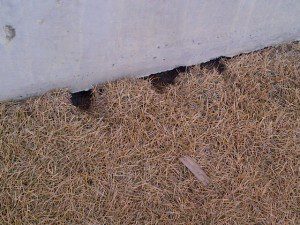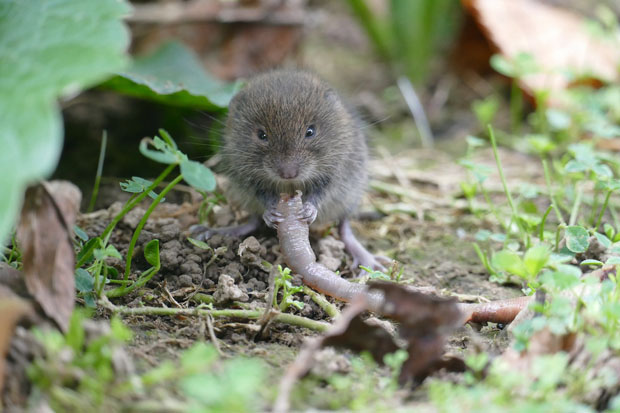Vole Pest Control Demystified: A Total Review of Invasion Discovery and Efficient Therapy Approaches
From subtle indications of infestation to the execution of targeted control procedures, navigating the world of vole bug control demands a mix of expertise and strategic activity. In this extensive introduction, we will explore the subtleties of vole problem detection and dive right into the realm of reliable therapy techniques that can safeguard your rooms from these underground annoyances.
Recognizing Vole Behavior Patterns
Understanding the intricate habits patterns of voles is essential for successfully implementing bug control measures in domestic and farming setups. Voles, tiny rats that look like computer mice however with stouter bodies, are infamous for their quick recreation rates and voracious hungers for greenery. By delving right into their behavior patterns, bug control professionals can obtain important understandings into vole susceptabilities, behaviors, and choices.
Voles are primarily herbivores, eating a vast array of plants, origins, tubers, and bulbs. They are likewise prolific tunnelers, developing intricate below ground burrow systems for nesting and foraging. By understanding these routines, insect control experts can tactically place catches and lure stations along vole runways and entrance factors, raising the probability of effective eradication.
In addition, knowledge of vole habits patterns can assist in establishing safety nets to discourage future invasions. By attending to elements that attract voles, such as thick greenery cover and conveniently obtainable food sources, property proprietors can make their premises less inviting to these damaging parasites - vole yard damage. Finally, a detailed understanding of vole behavior is critical in devising sustainable and efficient parasite control strategies
Identifying Indicators of Vole Problem
Efficient vole parasite control begins with immediately identifying the indications of vole infestation on buildings. One of the most usual indicators of vole visibility is the visibility of surface area runways. These paths are slim pathways through lawn or plant life that voles create as they take a trip in between their burrows and food resources. Furthermore, vole droppings are another clear indication of problem. Vole droppings are tiny, cylindrical pellets that are often discovered along their paths or near their burrows.
In addition to paths and droppings, gnaw marks on tree bark and greenery are also signs of vole activity. Voles have a routine of gnawing on the bases of bushes and trees, which can create damage and possibly kill the plants. The existence of burrow openings in the ground shows an active vole populace. Vole burrow entrances are typically small and discovered in grassy or mulched areas.
Being alert for these indications can aid homeowner find vole problems early and take appropriate parasite control procedures to stop additional damages.
Carrying Out Targeted Control Measures
What certain approaches can be utilized to successfully apply targeted control measures for vole bug administration on residential properties? Carrying out targeted control actions for vole parasite monitoring needs a multi-faceted technique that combines both prevention and eradication techniques. Among the key techniques is environment modification, which includes removing vole-friendly environments such as high turf, weeds, and debris near structures. Installing obstacles like hardware fabric or crushed rock around yard beds and tree trunks can also help hinder voles.
Trapping is an additional effective approach for regulating vole populaces. Live catches can be strategically placed along vole runways or delve entryways, baited with peanut butter or apple pieces. Once captured, voles ought to be humanely removed to a different location to avoid reinfestation.
Rodenticides can be used as a last option for severe infestations, but caution needs to be exercised to avoid harm to non-target animals. When making use of rodenticides for vole control - vole control utah., it is important to adhere to all safety and security standards and guidelines.
Environmentally Friendly and all-natural Solutions
The fostering of ecologically aware techniques can play an essential duty in handling vole populaces without causing damage to the environment. Natural and green solutions use a lasting strategy to vole pest control, minimizing using dangerous chemicals and promoting biodiversity in the affected areas.
One effective natural method is using killer pee or predator decoys. Killers like owls, foxes, and serpents are the vole's natural opponents. By strategically placing predator urine or decoys around the ravaged areas, voles may be deterred from resolving in those places.
In addition, planting vole-resistant plant life can aid in minimizing vole damage. Plants such as daffodils, crown imperials, and Siberian squill are understood to be uninviting to voles and can act as all-natural repellents.
Furthermore, developing physical obstacles like cable mesh or gravel around prone plants can stop voles from accessing them. These obstacles can assist safeguard gardens and landscapes without presenting any kind of danger to the setting or various other non-target varieties. By integrating these environmentally friendly and all-natural remedies, vole invasions can be taken care of successfully while keeping environmental equilibrium.
Long-Term Avoidance Methods
To sustainably deal with vole problems over time, carrying out positive actions is vital for long-term avoidance methods. One effective method for long-lasting prevention is environment adjustment. vole control. By lowering thick greenery, compost, and clutter around buildings, you can make your property much less appealing to voles. Additionally, installing obstacles like fencings or below ground wire mesh can help deter voles from invading your garden or yard.
Normal surveillance of vole task is essential for early discovery of any kind of signs of infestation. Setting up vole traps can assist in regulating their populace prior to it comes to be a full-blown problem. It is likewise vital to seal any entry indicate frameworks or structures to avoid voles from accessing.

Conclusion
In conclusion, recognizing vole behavior patterns, determining indicators of problem, executing targeted control procedures, utilizing natural and environment-friendly solutions, and executing long-lasting avoidance approaches are essential action in successfully managing vole infestations. By being positive and taking the essential steps to address vole issues quickly, individuals can effectively regulate and prevent vole problems in their residential or commercial properties.
